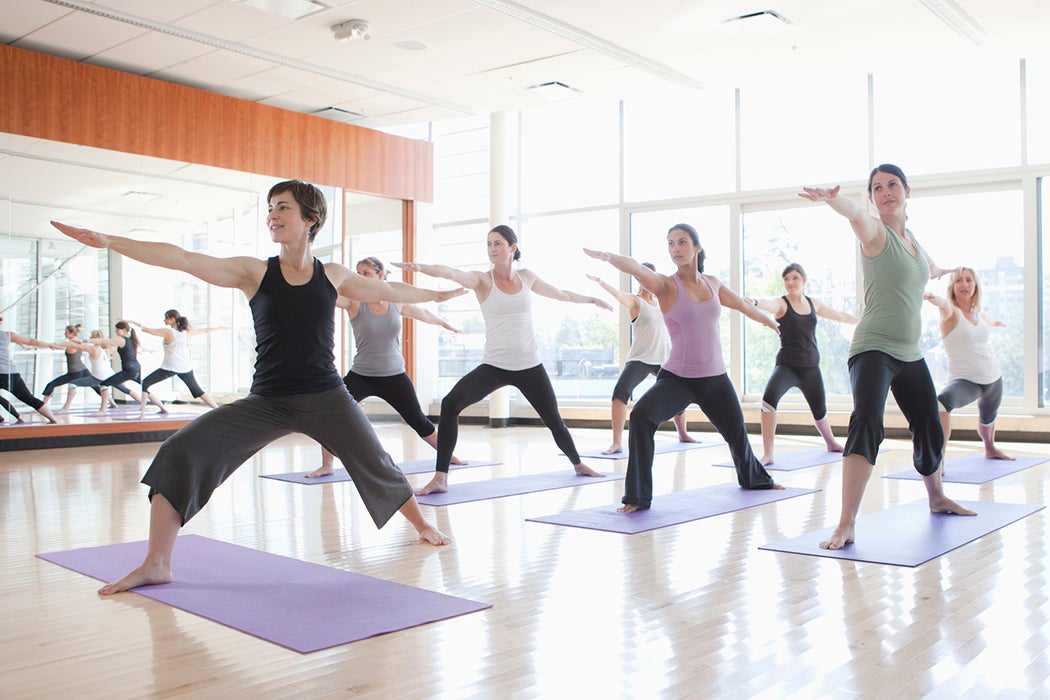What do Americans get out of yoga classes? In many cases, it’s a blend of physical movement, mental clarity, and even spirituality that we think of as distinctly non-Western. More than a century ago, two white Americans, Pierre Bernard and Blanche DeVries, helped shape this image, treading the line between the exotic and the wholesome, as religion scholar Joseph Laycock explains.
The context for Bernard and DeVries’s success was the arrival of 5,000 immigrants from India in the first decade of the twentieth century. As the newcomers took jobs in the Pacific Northwest, white workers mounted “anti-Hindoo” riots. Asian immigrants in general were associated with “white slavery” and other threats to white women. But, at the same time, Indians, like other Asians, were the subject of white fantasies about sex, drugs, and exotic religious practices. Laycock argues that Bernard and DeVries effectively sold this mystique.
By the turn of the twentieth century, there was already a movement to introduce Indian religion to the U.S. In particular, Swami Vivekananda, with the support of American Theosophists, sought to present a respectable “Protestantized” form of Hinduism that focused on moral philosophy, not embodied practices like hatha yoga. Yet this approach proved less popular than Bernard and DeVries’s version.
Laycock writes that Bernard started off on his own, drawing on vaudeville tropes like fortune telling with a crystal ball, as well as Western “esoteric gymnastics” to supplement practices from Indian yoga. He also used attractive young female followers, who he encouraged to wear form-fitting outfits while leading classes. Two of those women ended up accusing Bernard of keeping them in captivity using threats, hypnotic power, and morphine. Bernard spent more than three months in jail awaiting trial before his lawyer convinced the accusers not to testify against him.
Upon his release, Laycock writes, Bernard continued selling various mixes of Vedic philosophy, traditional Indian medicine, and spiritual practices. In 1918, he married Blanche DeVries, an aspiring vaudeville performer who had studied Oriental dance at the New York Sanskrit College. With DeVries’s help, Bernard moved toward greater legitimacy. They opened yoga studios aimed at women, and won the financial support of Anne Vanderbilt, who helped them construct a tony yoga facility called the Baeburn Country Club in Nyack, New York.
For white women in the U.S., the turn of the century was a time of new freedom. Yoga, along with other exotic “Oriental” practices like belly dancing, offered a way to frame female sexuality as sacred. DeVries channeled both the impulse toward women’s empowerment and the titillating images of exotic practices into a successful business model.
Weekly Newsletter
For men, Laycock writes, Bernard blended yoga with the rugged masculine physical culture epitomized by Theodore Roosevelt. Together with bodybuilder Bernarr Macfadden, he promoted yoga as a path to disciplined athleticism, not to mention sexual endurance, in contrast to an overly civilized society.
Bernard and DeVries’s canny blend of exotic stereotypes, trendy health advice, and new ideas about religion and gender helped build the foundations of the American yoga movement.







